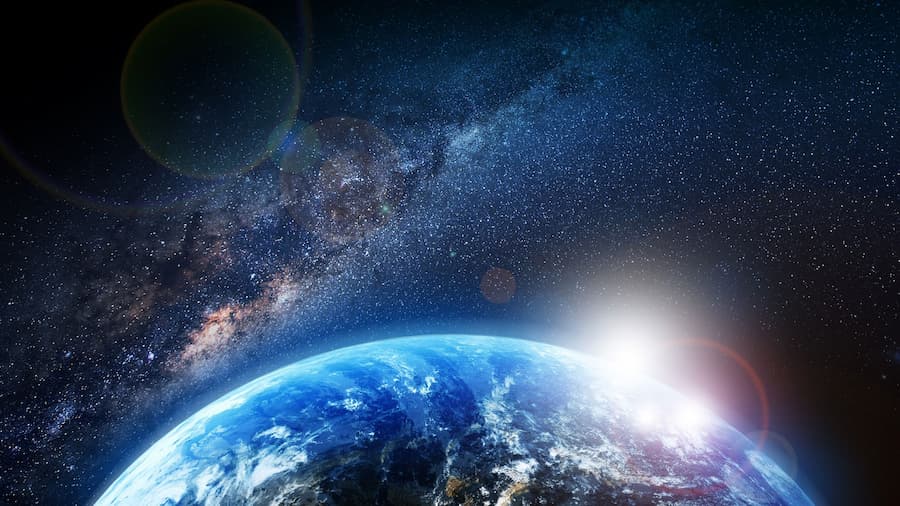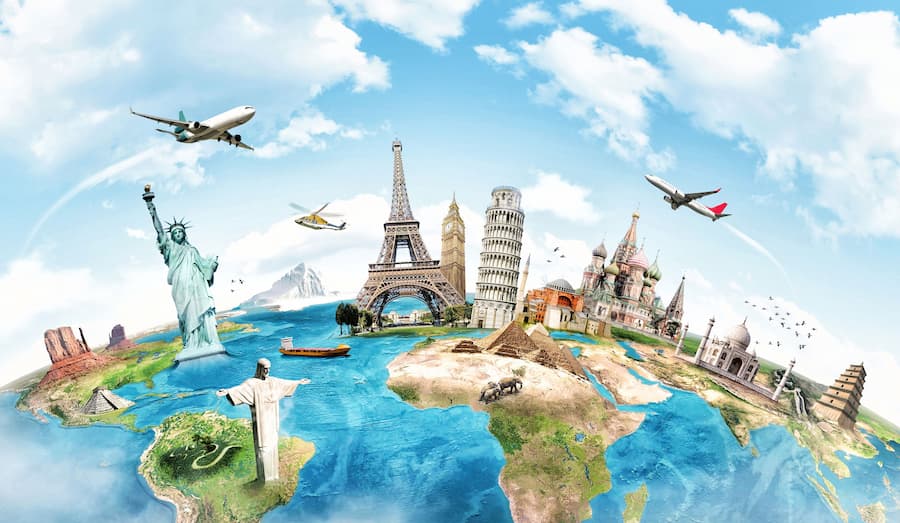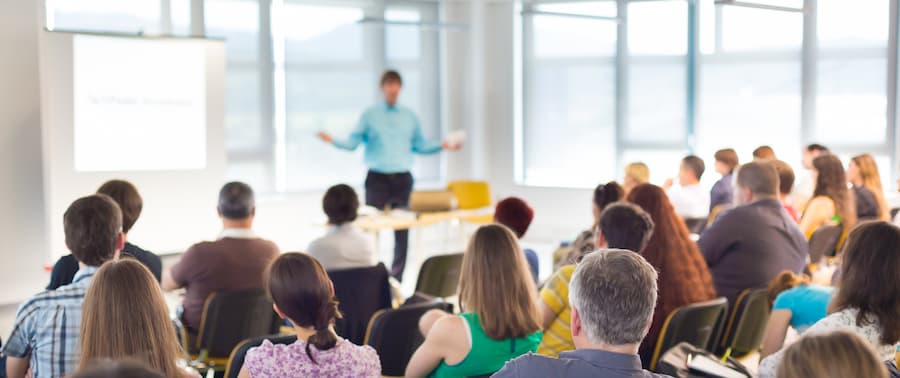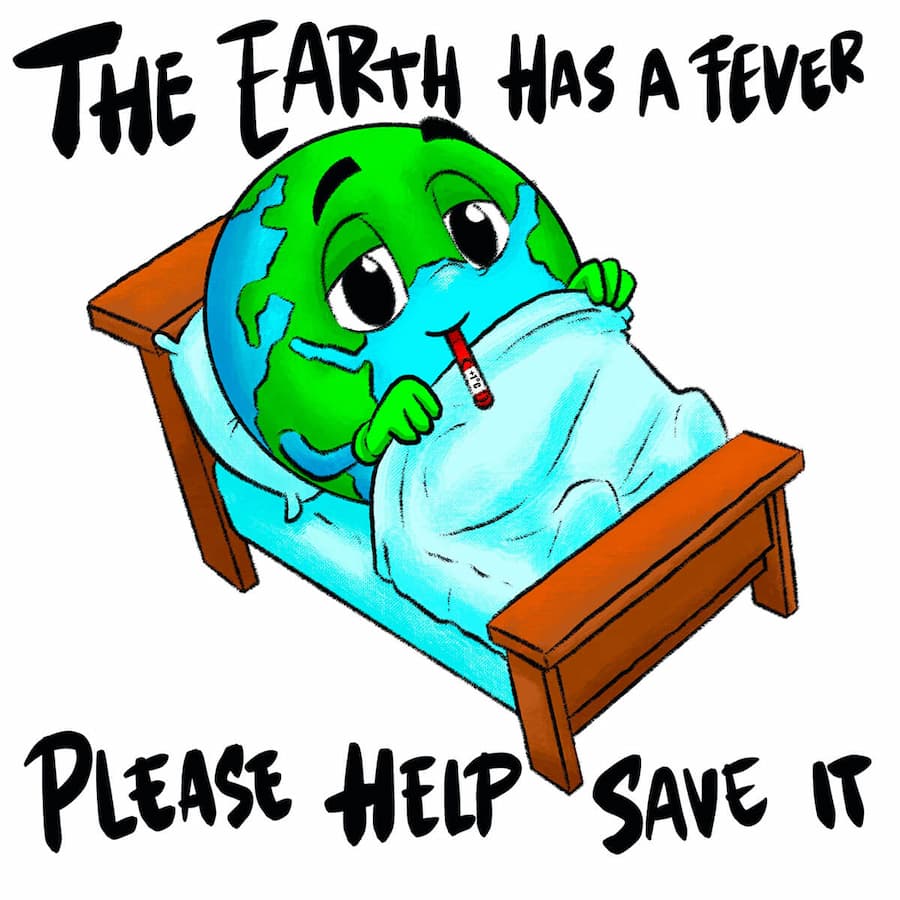Kurzgesagt - In a Nutshell
"Kurzgesagt – In a Nutshell" offers many great educational videos, including several on climate change. I will display several valuable videos about climate change on this page.
I highly recommend watching all the videos listed here as they provide a great deal of insight on this important topic.
We Will Fix Climate Change!
This video explains that although the future may seem like doom and gloom, there is hope. It is important not to feel hopeless. In fact, Kurzgesagt explains that the fossil fuel industry has weaponized hopelessness to continue making more profits.
This presentation states that we are in phase four of the public debate about climate action. The four phases are:
- Climate change is not real
- Climate change is real but not caused by humans
- Climate change may be caused by humans, but it's not that bad
- Climate change is no longer avoidable
It's crucial to understand that the fossil fuel industry has spread disinformation (see climate change denial) in order to confuse the public so that people are less likely to take real action, such as:
- voting for politicians that take climate change seriously
- spreading awareness about climate change
- investing in companies that are sustainable
- buying products from sustainable companies
Kurzgesagt states that if we want the world to change, we first need to believe that change is possible, and we have an abundance of evidence that it is:
- changes to our industrial system are gaining momentum
- technology gets better and cheaper (e.g. solar panels, wind turbines, batteries, and electric cars)
- climate change has become a key issue in most free elections
- as more and more younger people move into influential positions, they prioritize climate change and work on new solutions
- in 2022 most governments not only acknowledge climate change but set their own net-zero goals in democratic and autocratic countries
The video states, "...taking action today is worth it and that despite powerful industries doing everything to delay it, society is changing."

Can YOU Fix Climate Change?
An important point made in this Kurzgesagt video is that "The concept of your personal carbon footprint was popularized by the oil producer BP in a 2005 ad campaign, arguably one of the most effective and sinister pieces of propaganda that still seriously distracts all of us from the reality of the situation."
Essentially, although it is true that we can reduce our emissions by changing lightbulbs, using public transit and eating less meat, the reality is that our own individual emissions are tiny compared to large industries, particularly the fossil fuel industry.
So what can you actually do?
The opinion of the video is that we need to change the fundamentals of our modern industrial societies. Essentially we need to vote in politicians who take climate change seriously and vote out those who don't respect the science of climate change.
It's important to get governments to create laws to cause big reductions in greenhouse gas emissions in key areas:
- food
- transportation
- energy
- cement
- construction
Also, we need to get politicians to change the laws, incentivize the deployment of existing technologies, and massively invest in innovation for the fields where we don't have great solutions yet.
Towards the end of the video, the narrator states that you should vote at the ballot and vote with your wallet.

Is It Too Late To Stop Climate Change? Well, It's Complicated.
This video by Kurzgesagt discusses four factors which contribute to humanity's collective carbon dioxide emissions:
- Population Size
- Economic Growth
- Energy Intensity
- Emissions per Energy
Population and economic growth will continue to increase, but we can reduce energy intensity and emissions per energy.
There are many things we can do to quickly reduce global emissions from fossil fuels:
- Leave nuclear power plants online longer
- Cut subsidies to the fossil fuel industry and funnel them into renewables
- Price carbon emissions harshly and increase the price each year to create strong incentives for the world's industries to transition
- Enforce strict standards for energy efficiency and for any type of new construction
- Phase-out fossil fuel vehicles
Next, we will need to invent new and better technology such as:
- Carbon capture
- New generation of nuclear power plants
- Better batteries to store energy from renewables
The narrator also says: "The less fossil fuel we burn over the next few years, the more time we give innovation to catch up. The more low-carbon energy infrastructure we build today, the more we can compensate for economic growth and the people born today. The more coal power plants in construction we stop from being finished, the more CO2 we save."

Is Meat Really that Bad?
Meat causes a lot of greenhouse gas emissions, and Kurzgesagt explains many of the details.
How many kilograms of carbon dioxide equivalent emissions are produced for one kilogram of a particular food? The video states these facts in terms of their average:
- Beef - 71 kilograms
- Lamb - 40 kilograms
- Pork - 12 kilograms
- Poultry - 10 kilograms
- Tofu - 3.2 kilograms
- Potatoes - 0.5 kilograms
The video states that the transportation of beef is responsible for a relatively small percentage of its emissions. So what causes most of it? The video states: "By far the largest share of beef emissions consists of methane released directly by the animals. While CO2 hangs around for centuries, methane only stays in the atmosphere for decades. But in these short periods, it is very powerful. All in all, methane has already caused 23% to 40% of human-made warming so far."
There are many different factors regarding how much emissions are made for beef. The video states that the worst factor by far is the destruction of forests for farmland and adds that "Not only does this release the CO2 that was bound in the flora, it sets free carbon that was stored in the soil and destroys its ability to store it in the future."
Also, the video states that about half of the world's ice-free and desert-free land is used for agriculture, an area the size of the entire Americas plus China. Also, half of all agriculturally used land is dedicated to animals.
The video illustrates that for cereal crops:
- 48% is used to feed humans directly
- 41% is used to feed animals
- 11% is used for industry
In summary:
- Food is a huge driver of emissions
- Meat but especially beef, is the worst food in terms of emissions
- Buying locally does not have a big impact on food emissions compared to the type of food you are consuming
- When it comes to beef, cattle that are grass-fed can sometimes even be counterproductive because they just need much more land
- Even if you find the most environmentally-friendly beef in the world, your burger still comes with a significantly higher carbon footprint than a veggie pattie

Do we Need Nuclear Energy to Stop Climate Change?
When it comes to nuclear power, many environmentalists believe we need it to obtain 100% of our electricity from alternative energy. However, many environmentalists are strongly against nuclear power.
I think this Kurzgesagt video gives a good summary of this issue.
The beginning of the video reports that 76% of global greenhouse gas emissions were from the energy sector in 2018.
The video illustrates that in terms of global primary energy consumption, 84% is from fossil fuels and 16% is from low emission sources:
- 33% from oil
- 27% from coal
- 24% from natural gas
- 7% from hydroelectricity
- 5% from solar power, wind power, bioenergy, wave power, tidal power, and geothermal combined
- 4% from nuclear power
In terms of global electricity production by source in 2019, it consists of
- 27% from renewables
- 10% from nuclear power
- 63% from fossil fuels
Furthermore, we need to electrify energy in order to reduce emissions which means that electricity consumption in the future will be much higher. Another vital point is that since the wind doesn't always blow as strong and the sun doesn't always shine, it makes sense to have another source such as nuclear power to fill the gap.
Newer generations of nuclear power can be cheaper and safer (see this article about TerraPower).

Who Is Responsible For Climate Change? – Who Needs To Fix It?
This video from Kurzgesagt discusses the role of developing countries and developed countries in fighting climate change.
In terms of Global Emissions in 2017, the top polluting countries were:
- China - 27%
- United States - 15%
- European Union - 10%
- India - 7%
- Russia - 5%
- Japan - 3%
- Iran - 2%
- Saudi Arabia - 2%
- South Korea - 2%
- Canada - 2%
Another classification in terms of global emissions in 2017:
- Asia - 53%
- North America - 18%
- Europe - 17%
- Africa, South America and Oceania - 8%
- Aviation & Shipping - 4%
In terms of historical global emissions, the rankings are:
- United States - 25%
- European Union - 22%
- China - 13%
- India - 3%
- Africa - 3%
- South America - 3%
The video from Kurzgesagt also describes average emissions per person.
The global average was 5 tonnes of CO2 per person in 2017. Here is a list of some countries and their averages per year in 2017:
- Australia - 17 tonnes
- United States - 16 tonnes
- Canada - 16 tonnes
- Germany - 10 tonnes
- China - 7 tonnes
- India - 1.8 tonnes
- Nigeria - 0.12 tonnes
Another important fact shown by Kurzgesagt is that high and upper-middle-income countries are responsible for 86% of emissions, whereas the lower middle and low-income countries are responsible for only 14%.
The video states that "The harsh reality is that it's the countries that contribute least to the problem that stand to lose the most from rapid climate change. The developing world will be hit the hardest."
The consequences could include:
- Food insecurity
- Conflicts over resources
- Harsher and more frequent natural disasters
- Large climate refugee movements
Kurzgesagt concludes with these statements: "Climate change is a global problem, and no country alone can fix it. Working out who's responsible is not as simple as it seems, and in a way, it's a daft (silly) question but one that has plagued international politics for decades. In the end, it's pretty simple. Everybody needs to do the best they can, and right now we are all not doing that. But we can begin today."

Geoengineering: A Horrible Idea We Might Have to Do
Geoengineering is a very controversial topic, but I think Kurzgesagt did a good job of explaining it.
Personally, I think that geoengineering should only be used as a last resort, and we should just invest in reducing greenhouse gas emissions as much as possible.
Geoengineering includes interventions such as:
- Constructing giant light sails in space (to block sunlight)
- Seeding clouds with salt
- Fertilizing the oceans with iron to speed up the growth of trillions of algae cells
- Stratospheric aerosol injection
The video from Kurzgesagt focuses on the last one, stratospheric aerosol injection. This entails spraying chemicals very high up in the atmosphere to block sunlight.
The video states that "About 29% of the solar radiation hitting Earth is reflected back to space by bright surfaces like ice, deserts, snow or clouds. More reflection, less energy, less warming."
It's important to note that there could be serious side effects to spraying aerosols into the atmosphere, such as:
- Rainfall patterns could change, which could negatively affect agriculture and cause famine. Billions of people could be affected in the worst case
- It could worsen the holes in the ozone layer
- Politicians and industry might use the cooling effect as an excuse to delay the switch to a carbon-neutral economy
- The increase in carbon dioxide emissions could still cause ocean acidification which will be very harmful to marine life, including coral reefs
- We could risk a termination shock - once this type of geoengineering stops, the global temperatures will spike since there is a higher concentration of carbon dioxide in the atmosphere (an increase in temperature that would take 50 years today could happen in just 10 years)
In the best case scenario, geoengineering could buy humanity time (a decade or two) to properly address climate change.
The narrator of Kurzgesagt concludes by saying, "Geoengineering is a scary concept. It is not a solution to climate change and it might even be a welcome excuse for the fossil fuel industry to delay the end of the fossil fuel age. Over the last few decades, geoengineering has been so controversial that it stopped many scientists from doing the experiments necessary to understand it better. But blankly opposing geoengineering is short-sighted. The sad truth is that we are already running a geoengineering experiment. We are testing how fast the world changes if we add about 40 billion tons of CO2 each year. This experiment is about to get really exciting. Hopefully, we never have to use geoengineering. But if we need to in the future, we better have done the science. We better be prepared. Or a panicking humanity might accidentally press the self-destruct button."

Other Kurzgesagt Videos
There are many other interesting videos from Kurzgesagt that are very well done, such as:
- Are GMOs Good or Bad? Genetic Engineering & Our Food
- Is Organic Really Better? Healthy Food or Trendy Scam?
- Overpopulation & Africa



Further Reading and Sources
- Home
- YouTube Videos
- Kurzgesagt - In a Nutshell
Join the Community and Newsletter (5000 Subscribers)
You can subscribe to my Substack Page or see the archives of previous posts. More great content coming soon!
Recent Articles
-
Climate Change Guide
Apr 23, 24 12:36 PM
The Climate Change Guide is your guide to a more sustainable future, and will provide you with all relevant information on mankind's greatest challenge. -
Climate Presentations by Climate Reality
Mar 03, 24 12:17 AM
You can see great climate presentations by Climate Reality. They can be customized for different audiences. -
Make the Planet Great Again!
Mar 02, 24 11:33 PM
We need to make the planet great again! We will build a solar wall along the Mexican border and make the fossil fuel industry pay for it! -
Historical Climate Change News
Mar 02, 24 11:25 PM
This section includes historical climate change news you should know about. These articles span several different topics and will help you stay up-to-date.




